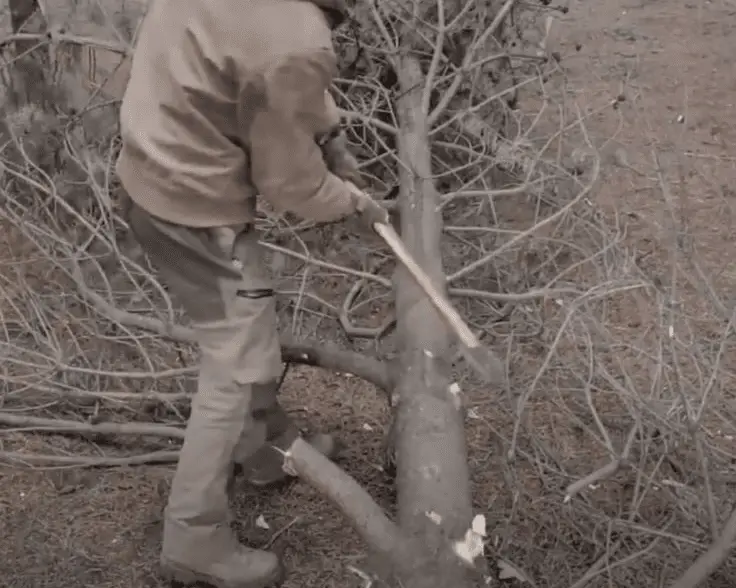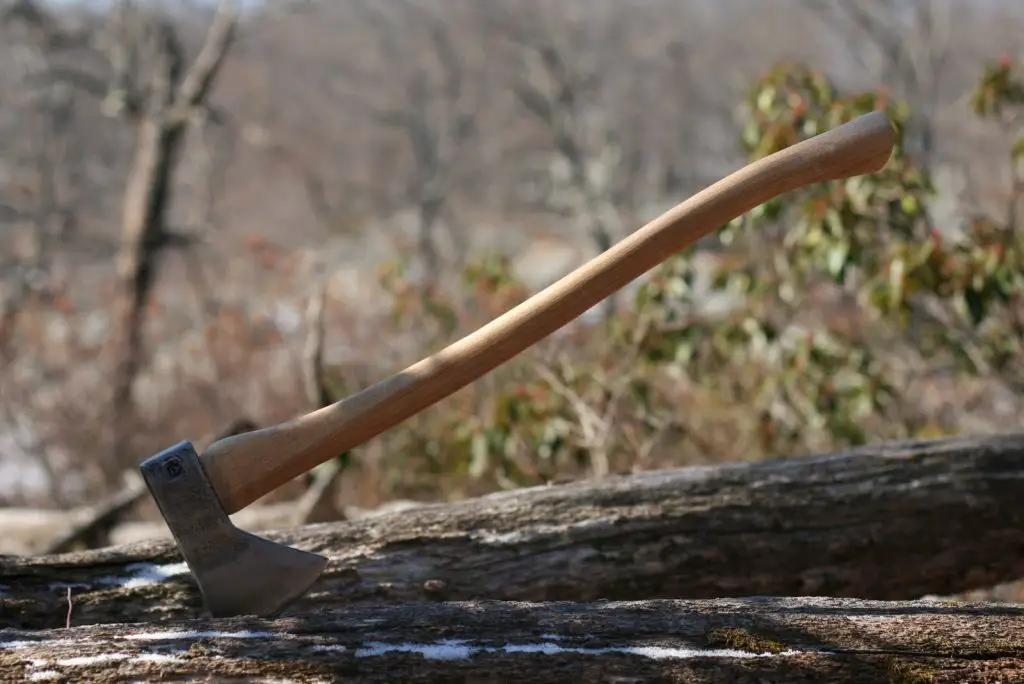A limbing axe is a specialized tool designed for removing branches from felled trees, featuring a lightweight design, sharp, thin blade, and a long handle. This combination allows for precision cutting and efficient energy transfer, making the limbing process easier and more controlled.
Limbing axes are used to remove branches from a tree after it has been felled. They are more versatile and can be used for felling small trees, trimming branches, clearing brush, and limbing logs. They are generally shorter than a felling axe because you don’t need to produce as much force and have a thinner profile than a splitting axe to penetrate more deeply into the wood.
Limbing axes may also be described as a boy’s axe or swampers axe.
Table of Contents
Purpose
After felling a tree, the next step is removing all the branches, called limbing. This leaves a clean log that can be processed into whatever wood is required. Limbing requires a different type of axe than felling the tree. Branches are significantly thinner than the trunk and can be stuck at all angles. This means a smaller, more maneuverable axe is better suited to the task.
Limbing axes are shorter with a thinner profile axe head that allows them to be swung in the congested areas of a bushy tree and penetrate through the branches in a single strike.
Features and Design
Certain characteristics make an axe more suitable for removing branches from a log. These design features can be defined as:
- Axe Handle Length – 24 to 28 inches
- Axe Weight – 3 to 4 pounds
- Axe Bit Profile – Thin to Ultra-thin
The ideal limbing axe is more similar to a boy’s axe than a splitting axe. An important factor to inspect is the profile of the axe head. A splitting axe has a wide profile head that can force the fibers of a log apart, but for limbing, you want an ultra-thin profile that can penetrate more deeply into the wood – this means that you can remove the entire branch in a single strike.
You can also use a double bit axe with one side designed for felling and the other built for limbing.
How to Limb a Log
-
Position Yourself
Stand above the log, ideally with the target branch sticking horizontally away from your body on the far side of the trunk. In case you slip or miss, this places the log between your legs and the axe. Avoid standing on the trunk as the branch may be holding it stable, and cutting the branch may make it rotate.
-
Clear Your Surroundings
Remove any small branches in the path of the axe swing. Look behind and above you for obstacles.
-
Correct Hand Position
Place one hand on the throat of the axe handle and the other on the shoulder.
-
Slide and Swing
Slide your top hand down as you swing the axe down.
-
Strike Accuracy
Strike the branch as close to the trunk as possible without penetrating into the log itself.
-
Remove the Branch
Larger branches may need a strike from the opposite side to deliver a clean cut.
-
Repeat and Reposition
Repeat until all branches have been removed. You may need to roll and rotate the log to position branches correctly.
-
Bucking
Once all the branches have been removed you can progress to bucking the downed tree into appropriate lengths.

Paul Kirtley has a good article showing how to limb a tree from multiple angles and methods that you might find useful.
Limbing Axe Examples
Plenty of limbing axes are available on the market at the moment. You can pick from this list and be confident that you are getting a high quality axe that will get the job done and last for years to come.

What is the difference between a limbing axe and a splitting axe?
Splitting axes have a longer handle and a thicker profile to generate more force and split wooden logs apart, while limbing axes have shorter handles to maneuver through congested areas and a thinner profile to cut deeper into wood and remove branches in a single strike. Limbing axes are generally much lighter than a splitting axe because of the smaller axehead and shorter handle length.
What is the difference between a limbing axe and a felling axe?
Felling axes have a longer handle profile to generate more force, while limbing axes have shorter handles to maneuver through congested areas around bushy trees. Limbing axes are generally much lighter than a felling axe because of the smaller axehead and shorter handle length. Both axes have similarly thin profiles to penetrate more deeply into the wood.
Conclusion
Limbing axes are a great addition to any woodworker’s or landowner’s garage. Having the right tools for the job will make your day much easier. Felling axes are too long and heavy to be used effectively at limbing when so much less force is required. I am a big fan of using the best tool for the job, and switching to a limbing axe to process a downed tree is sensible. Limbing axes are between 24 and 28 inches long with a 3 to 4-pound total weight. The key design consideration is the profile of the axe head so make sure you get a thinner style.
